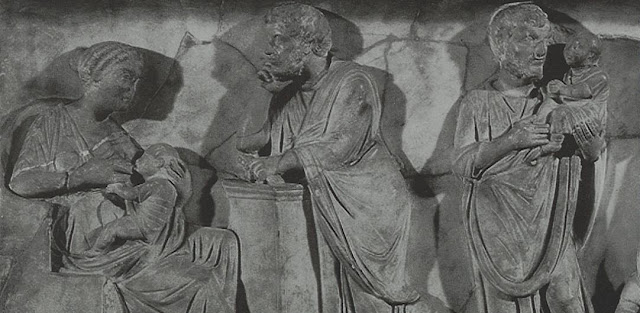Outside the immediate circle of persons subject to the same paterfamilias relationship was still traced exclusively on the agnatic principle, i.e. only relationship through males was recognised.
Two people are related agnatically if they are in the patria potestas of the same man, or if there is some common ancestor in whose power they would both be if he were alive (1). Two brothers or a brother and a sister are thus agnates, and so are a man and his brother's son or daughter, because they are both in the potestas of the same man, i.e. the father of the one and the grandfather of the other (or would be if he were alive), but a man and his sister's son are not related agnatically because they could never be in the same potestas –they are mere cognates, cognates being all relatives whether the relationship be traced through males or females–. The bond of patria potestas can, as we have seen, be created artificially by adoption, which gives to the adopted child all the rights he would have had if he had been born in potestas; he becomes by the adoption the agnate of all his adopting father's agnates. On the other hand he loses all agnatic connection with his previous family, as does also the person who is emancipated. Manus has the same effect as patria potestas; on marriage with manus the woman passes out of the agnatic family of her father into that of her husband, in which she occupies a position similar to that of her husband's daughter.
The working of the agnatic principle has already been seen in relation to guardianship; still more important is its operation in relation to intestate succession, to which we now pass.
----------
(1) Or, of course, if they are father and child.
----------
- The law of the family and of succession at the time of the XII Tables
+ Marriage
+ Patria potestas
+ Guardianship
+ Intestate succession
+ Testamentary succession
----------
Source:
Historical introduction to the study of Roman law, H. F. Jolowicz, page 122.
